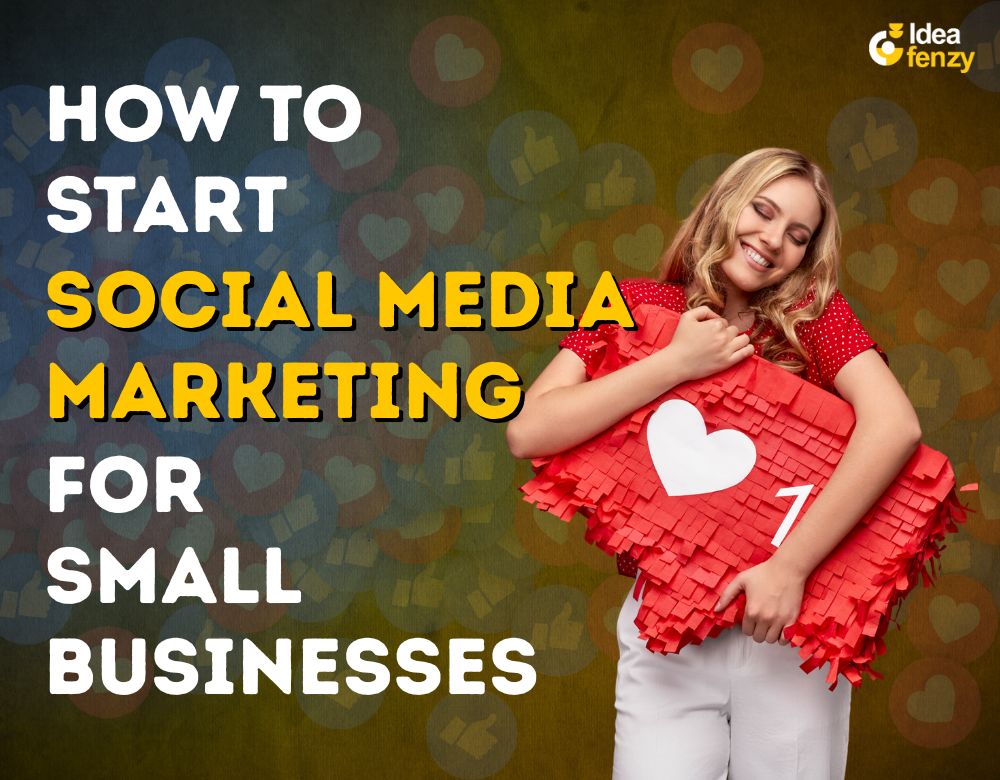Social media marketing has become essential for small businesses to build brand awareness, engage with customers, and drive sales — all without a huge budget. In fact, recent studies show that over 80% of small businesses find their audience and increase visibility through platforms like Instagram and Facebook. If you’re new to social media marketing, don’t worry! This step-by-step guide will walk you through exactly how to start social media marketing for your small business in 2025, even if you’re on a tight schedule or budget.
Why Social Media is Essential for Small Businesses
Social media marketing offers unique benefits for small businesses:
- Brand Visibility: With billions of users worldwide, social media lets you get your brand in front of a massive audience.
- Cost-Effective Marketing: Unlike traditional ads, creating and sharing content on social media can be free or low-cost.
- Direct Customer Engagement: Platforms enable direct conversations, feedback, and relationship building with your customers.
- SEO Benefits: Social signals such as shares and reviews indirectly boost your website’s search engine ranking.
Set Your Social Media Marketing Goals
Before you jump in, it’s important to clarify what you want to achieve. Setting clear goals helps you focus your efforts and measure success.
- Awareness: Do you want more people to know about your brand?
- Engagement: Are you looking to increase likes, comments, and shares?
- Sales: Is your goal to drive traffic to your website and boost purchases?
Make your goals SMART (Specific, Measurable, Achievable, Relevant, Time-bound).
Example: “Gain 1,000 Instagram followers in 3 months.”
Identify Your Ideal Customer (Buyer Persona)
Understanding who your customers are will help you create content they want to see.
- Define demographics like age, location, and gender.
- Consider psychographics — interests, values, challenges.
- Ask yourself: Where do they spend time online? Instagram, LinkedIn, YouTube?
- Use tools like polls, Google Forms, or simple conversations to gather feedback.
Choose the Right Platforms (With Pros & Cons)
| Platform | Best For | Pros | Cons |
|---|---|---|---|
| Lifestyle brands, B2C, services | Highly visual, Reels trend | Requires consistent posting | |
| B2B, consulting, professionals | Builds trust and network | Less visual, slower growth | |
| Local targeting, groups | Good for events, low-cost ads | Organic reach declining | |
| YouTube Shorts | All businesses | SEO-friendly, long-term views | Video creation takes time |
Choose platforms where your audience is most active and where your content format fits best.
Create a Content Plan (with Examples)
Plan your posts around a few key content pillars to maintain consistency:
- Tips & How-tos
- Behind-the-scenes stories
- Customer testimonials
- Product/service highlights
Example weekly plan:
- 2 Reels or Shorts
- 1 Carousel post
- 1 Story Q&A
- 1 Customer testimonial
Use tools like Notion, Trello, or Google Calendar to schedule and organize content.
Design Posts with Free Tools
You don’t need to be a designer to create eye-catching posts:
- Use Canva for ready-made templates and brand consistency.
- Use apps like Mojo for animated Instagram Reels templates.
- Always stick to your brand colors, fonts, and style.
Schedule & Automate Content
Consistency is key in social media marketing.
- Use free scheduling tools like Buffer or Meta Business Suite to plan posts in advance.
- Post during your audience’s peak active hours for maximum reach.
- Include clear CTAs: ask questions, encourage comments, or prompt saves/shares.
Measure Results and Improve Weekly
Track key metrics to understand what’s working:
- Reach (how many people saw your posts)
- Engagement (likes, comments, shares, saves)
- Direct messages or inquiries
Use native platform insights (Instagram Insights, Facebook Page Analytics) to analyze data.
Test different post types and posting times, then adjust your strategy accordingly.
Bonus Tips for Faster Growth
- Use trending music and audio for Reels to increase discoverability.
- Join relevant Facebook or LinkedIn groups to share your content organically.
- Cross-promote posts via WhatsApp groups and email newsletters.
- Encourage customers to create and share content about your brand (User Generated Content).
Frequently Asked Questions (FAQs)
1. What is the best platform for small business marketing?
Instagram and Facebook work best for most B2C businesses. LinkedIn is ideal for B2B and professional services.
2. How often should I post?
Aim for 3–5 posts per week, balancing quality with consistency.
3. What tools are best for beginners?
Canva for design, Buffer for scheduling, and Google Forms for customer feedback.
Final Thoughts
Starting social media marketing for your small business doesn’t have to be overwhelming. By setting clear goals, knowing your audience, choosing the right platforms, and planning content strategically, you’ll build a strong social presence that drives growth.
Ready to take your social media marketing to the next level? Check out our next guide on Instagram Reels Strategy for Service-Based Businesses or contact Ideafenzy for personalized social media management services.

